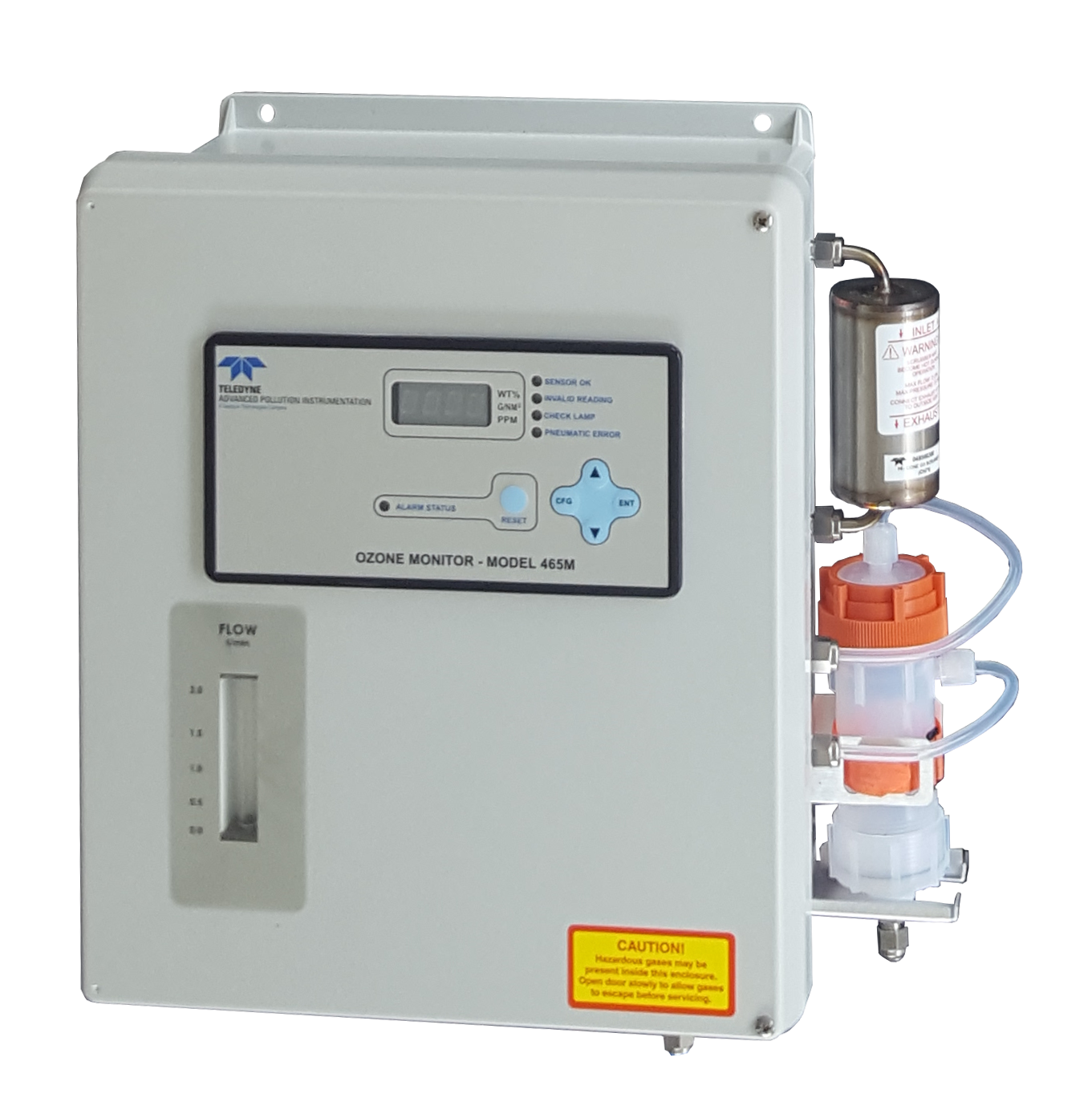Ozone

Gas-Sensing is a partner company to Oxidation Technologies, LLC. Oxidation Technologies provides services and products exclusively to the ozone industry. For all ozone related inquiries please refer to Oxidation Technologies.
What is Ozone?
The oxygen atom is unstable in the atomic form. Oxygen is stable in the diatomic form as O2. The air we breath today is made up of about 21% oxygen, this makes oxygen one of the most common molecules found in nature today.
Ozone is a triatomic form of oxygen, meaning that the molecule, ozone, is made up of 3 oxygen atoms. Unlike oxygen, ozone is a visible gas with a light blue color at very high concentrations. At low concentrations ozone is colorless. Ozone also has a distinct odor that is noticeable at very low levels and may be associated with a “clean” smell, at higher levels ozone has a very pungent odor. Ozone is an unstable gas that readily decomposes to oxygen naturally. Ozone is also a highly reactive gas that acts as a very strong chemical oxidant.
Measuring Ozone in Air
Many applications require measurement and control of ozone of very low concentrations under 300 ppb (parts per billion). At these low concentrations, one needs to consider the following sampling issues with measuring ozone.
Ozone Characteristics
Ozone is Highly Reactive
-
Ozone is highly reactive. Ozone will react readily with organic materials and surfaces such as walls, flooring, ceiling material, plastic test chambers and people. The greater the accuracy of the ozone monitor, the greater the variations will become apparent. If you are testing the accuracy of ozone monitors in test chambers, ensure the devices inside the chamber are clean and do not readily react with ozone. Such materials that work well are fluoropolymers and glass.
-
Ozone will react with dust and oils. Ensure that all surfaces are clean and that any solvents used to clean such surfaces have completely dried. Even slight solvent residuals will have a dramatic effect on the sensor and residual ozone level in the chamber.
- Ozone concentration gradients are common in rooms and are greatly influence by air movement and eddy currents. This effect will be more pronounced at concentrations less than 100 PPB.
Monitor Design and Use
- Aeroqual’s ozone monitors are designed with "active sampling" to maximize air sampling at the sensor (to minimize ozone losses). Most expensive, analytical instruments also employ active sampling (e.g. UV photometry).
- Products without "active sampling" (electrochemical and conventional HMOS products) will normally under-read ozone concentrations below 200 parts per billion and struggle with sensitivity and accuracy, particularly in low air flow.
- "Active sampling" requires air to be blown or pumped to the sensor under precise flow conditions. Aeroqual fan based monitors are designed to be held at right angles to any direct stream being measured. Avoid forcing pressurized air into active sampling monitors:
- Air inlets are manufactured from cleaned stainless steel mesh and fluoropolymer materials to minimize ozone loss.
Measuring Ozone in an Occupied Room
Ozone concentrations can vary greatly at various locations, and the concentrations are often highest in unexpected places. Key points to consider are:
-
Ozone is much heavier than air and tends to sink to lower levels.
-
Ozone has a low vapor pressure and so it does not try to fill the room uniformly. It tends to stay where it is.
-
Ozone tends to cling to rough surfaces such as fabrics and breaks down (converts back to oxygen) when passing through restricted and obstructed passageways.
-
Ozone reverts back to oxygen with a "half life" (time to go to half of its original concentration) typically of 10-30 minutes.
-
Ozone can be confused by instrumentation with other oxidizing gases such as chlorine compounds, acid fumes, and oxides of nitrogen (NOx). Strong "reducing" gases, such as vapors of alcohol and solvents, can reduce the apparent concentration of ozone.
-
Ozone has a sweet smell, but the odor threshold varies widely by the person and by ambient conditions. Therefore "smell" is not a reliable test for the presence or concentration of ozone.
The important measurement is:
What is the ozone concentration at the breathing level where room occupants will be?
For ozone introduced via HVAC systems with good room air circulation, the alternate point of measurement is near the entrance to the return air duct.
Contact us for help choosing the right Ozone Sensor for your application
Our full line of Ozone (O3) monitoring solutions are shown below
|
|
 |
 |


















